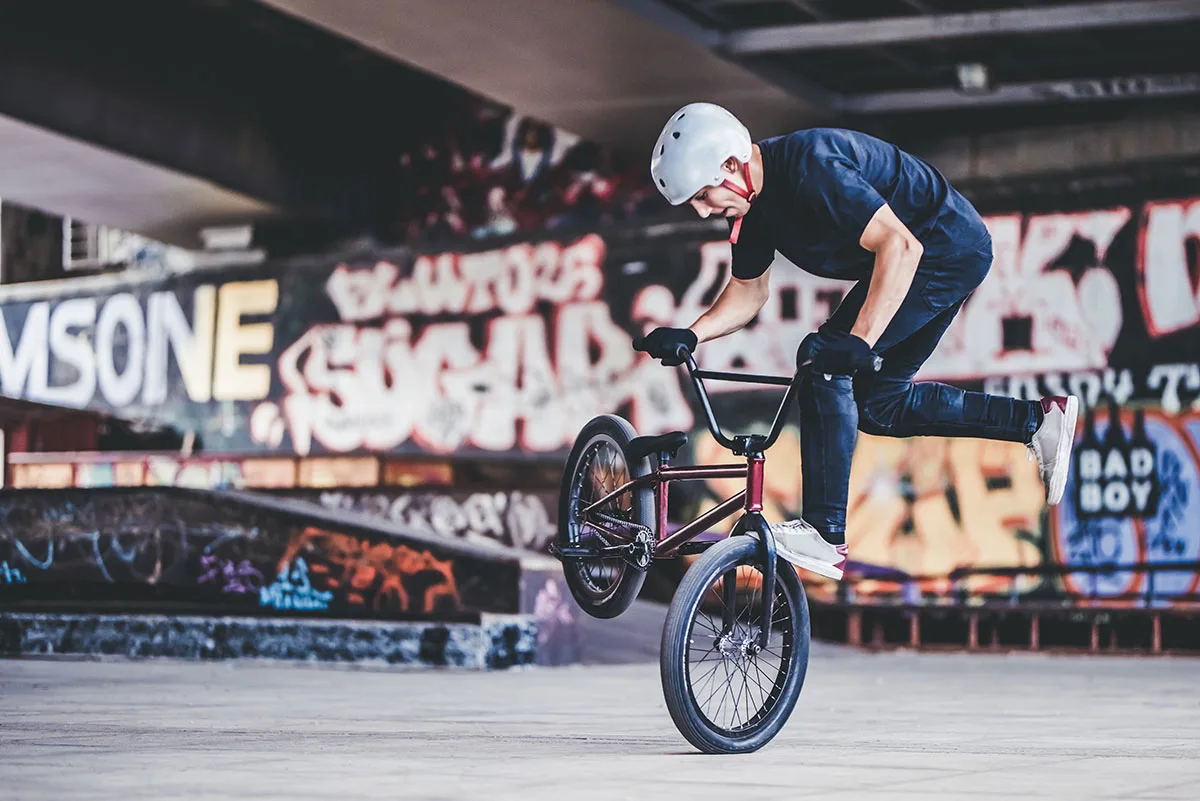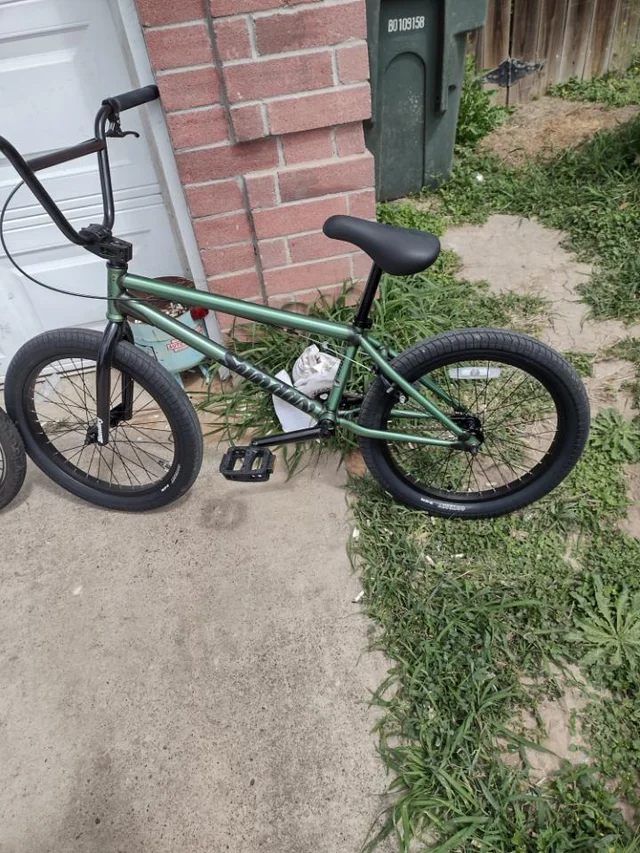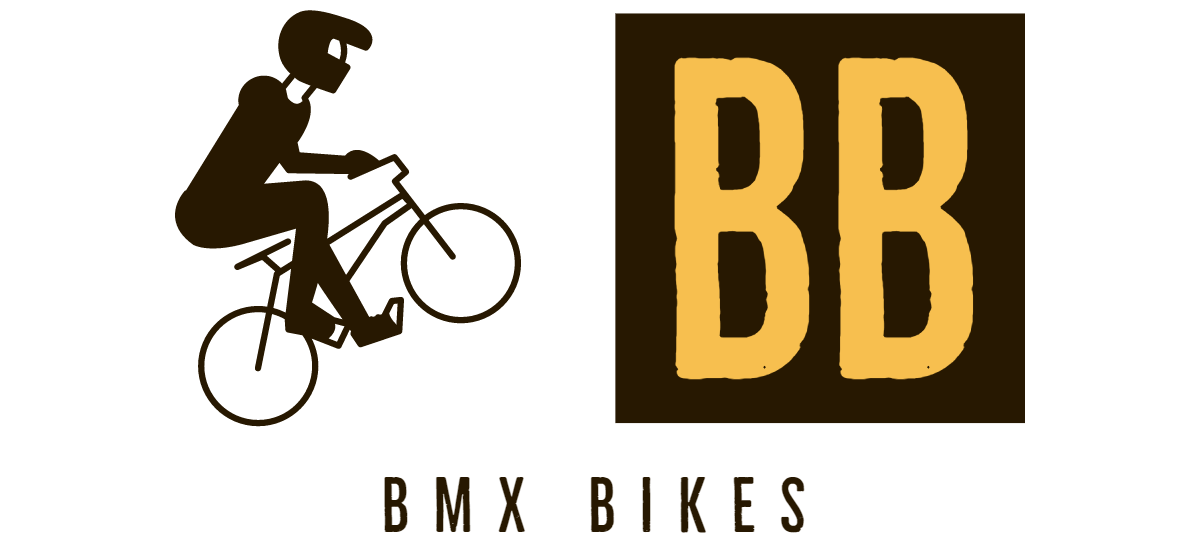Do you want to experience the thrill of a lifetime with a BMX bike? Look no further than Flatland BMX bikes – the ideal combination of thrilling rides and stylish aesthetics.
Learn everything you need to know about these special bikes and how they set themselves apart from other BMXs.
BMX (Bicycle Motocross) first came onto the scene in the early 1970s, bringing a new level of intensity to cycling. The original BMX bikes were designed for motocross racing; however, this style quickly evolved, leading to new variations and riders discovering unique ways to use their bikes. In the years that followed, BMX bikes have become popular among all types of riders from cruisers to dirt jumpers and even freestyle tricks specialists. One particularly unique type of BMX bike is known as “flatland BMX” which is known for its distinctive look and ride feel.
In this guide we will explore flatland BMX biking in further detail – what it is, how it’s different from other kinds of BMX biking and the best tips for getting started with it. Keep reading if you’re interested in learning more about flatland BMX or want to take up the sport.

Basic overview of BMX bikes
BMX bikes have changed considerably since they were first created in the early 1970s. Today, there are a wide range of BMX bike types and designs available, but they all follow the same basic principles.
A typical BMX bike consists of a frame and fork that is often made from high-tensile steel or aluminum, a set of cranks connected to pedals at the bottom bracket, handlebars and stem for steering with two or more pegs for grinding tricks, a drivetrain composed of sprockets and chain, wheels with hubs in the front and rear that contain spokes that connect to rims around the outside (freewheel hub for Manuals)and two or more brakes with levers for control. The details surrounding these components can vary greatly depending on what type of BMX bike you are looking at.
This guide will provide greater insight into flatland BMX bikes and how they compare to other styles of flatland riding.
History of BMX bikes
The invention of flatland BMX bikes is closely tied to the history of modern BMX in general. In the 1970s, with its ever-increasing popularity, BMX gained traction throughout the US. The first official BMX racing sanctioning body, the American Bicycle Association (ABA), was established in 1978. Later that same year, the National Bicycle League (NBL) was founded.
However, it wasn’t until the early 1980s that flatland riding styles began to emerge. By 1983, several of the top riders were performing what is now considered a “classic” flatland trick – performing a 180-degree turn over a ramp while airborne – during demonstrations and competitions. This became so popular that at least one team was strictly dedicated to flatland riding and performing.
By the end of 1983, flatland riding had become an integral part of BMX culture and transformed into its own distinct subgenre of freestyle bmx with characteristic elements such as no hand hopping or jumping, limited use of manual riding (riding without using both hands on handlebars), spinning tricks on rear and front axles, slow rotation friction spins, etc.
Common features of BMX bikes
All BMX bikes share a few common characteristics: they all have front and rear brakes, two or three piece cranks (the number depends on the type of racing), and 20-inch wheels.
Tires are usually low-profile street-specific tires, with rigid or soft suspension options available. Geometries also vary depending on the type of BMX bike: race bikes are often flat, while jump and freestyle rigs tend to have more aggressive angles.
Frame sizes vary from mini, which is designed for beginners up to large frames for veteran riders who have been riding for years. A range of materials can be found among frames – aluminum, chrome-moly steel, titanium etc. Depending on the size and design of your bike it can weigh anywhere from 10–25 lbs (4 1/2 – 11kg).
III. Features of Flatland BMX bikes
Flatland bikes typically have a more relaxed geometry than other BMX bikes, which means that the top tube and wheelbase length is longer. This allows for more flexibility in doing tricks, as well as providing stability when riding.
They also tend to feature a lower stand-over height than other BMX models, which further increases maneuverability when performing various tricks. Many Flatland BMX bikes will also feature frame gussets to add strength and durability, as well as mid-BB shell along with longer spindle lengths; allowing riders to enjoy increased foot clearance while performing certain trick combinations.
Additionally, Flatland BMXs often include seating posts without frames in order to give riders greater freedom of movement while they are on the bike. Finally, Flatland BMX bikes feature smaller wheel sizes than other models so that riders can be able to rotate them faster and manipulate them into different positions for various flatland stunts.
Frame geometry
The frame geometry of a flatland BMX bike is what sets it apart from other BMX bikes. Unlike other bikes, flatland bikes are designed to have a low center of gravity and long wheelbase for greater stability. Although the frame will typically be made from the same materials as any other BMX bicycle, it may have direct-welded components that are intended to provide increased strength and lessen weight.
Flatland bike frames are also built with an increased degree of angles in comparison to many standard BMX frames, allowing riders to more easily ‘pop’ their front wheel up over obstacles while performing tricks. Additionally, flatland frames tend to be built with a slightly higher bottom bracket height than regular street/park bikes which provides more ground clearance when maneuvering in tight spaces or doing stalls on walls and rails.
Forks
Forks are a critical element in any bike, BMX included. On flatland bikes, forks provide the rider with stability and comfort while performing tricks. Perhaps most importantly, they also provide support when grinding on obstacles. Flatland bikes typically feature heavier and longer forks than their dirt-oriented counterparts which provides an extra level of strength when grinding and may also offer additional clearance for wider tires.
There is a wide array of fork styles available, each designed with its own advantages and disadvantages. The three primary types of forks used on flatland bikes are threaded, threadless, and integrated headset designs.

Maintenance and care of Flatland BMX bikes
Just as with any other BMX bike, there are special maintenance and care considerations to keep in mind when it comes to the unique design of Flatland BMX bikes. Identifying and resolving maintenance issues is critical to ensure you get the most out of your bike and maintain its performance both now and in the future. Here our some tips for maximizing your riding experience:
-Clean your bike regularly. Dirt, dust, and grime can degrade frame materials, which will ultimately reduce performance over time. Use an air compressor or soft brush to remove dirt from hard-to-reach places on your bike after every ride.
-Check screws/bolts that hold components together on a regular basis. As with any other type of bike, Flatland BMX bikes have many small components that require periodic tightening and maintenance due to vibration during rides – especially across rough terrain or during big jumps!
-Make sure tires are properly inflated prior to each ride according to your manufacturer’s specifications. This will ensure proper handling & grip on both flat surfaces & surfaces with obstacles like ramps or coping.
-Lubricate pivot points periodically where necessary (seat post & stem clamps). This will help minimize wear & tear while ensuring maximum lifespan of your equipment. Be sure not use too much grease as this can make flatland tricks difficult if parts become slippery!
-Use proper safety gear when riding (helmets, gloves, elbow pads). Harsh landings or trips over rails can result in injury without proper protection – take it seriously!
Regular maintenance tasks
Taking good care of your Flatland-specific BMX bike will help keep it running smoothly and ensure that it is always ready for the next session. Below are some of the basics for keeping your bike in peak condition:
-Cleaning: Regularly clean your bike to prevent dirt or dust buildup which can lead to squeaking or grinding and eventually cause damage to components. Use warm, soapy water and a soft cloth or sponge. Make sure to carefully dry off all surfaces after cleaning.
-Lubrication: Make sure to lubricate any moving parts such as bearings, cranks, chainring bolts, derailleurs and so on with a non-stick bicycle chain lubricant. This will help protect against rust and corrosion as well as reduce friction and wear on moving parts.
-Tuning: Check all nuts, bolts, levers and spokes periodically for tightness to make sure everything is secure and won’t come loose during a ride. If anything does become loose or broken replace it as soon as possible with an appropriate replacement part or professional repair job.
-Inspection: Inspect your bike periodically for any signs of wear or damage on components such as tires, rims, brakes, handlebars etc. Replace anything that looks worn out or broken before continuing to ride on it otherwise you may risk further damage occurring down the road.
-Storage: Always store your bike indoors preferably in a protective cover when not in use as this will protect against dirt accumulation along with weather damage like rusting if stored outside in wet conditions over prolonged periods of time.
Cleaning and lubrication
Maintaining and cleaning a flatland-specific BMX bike is critical to its proper operation. Proper lubrication of the components is key to developing proper response, as it reduces friction and allows smoother spinning, while cleaning the bike helps maintain its appearance and also allows for better inspection of its wear and tear.
The most important components that require lubrication are the sprocket, chain, bottom bracket spindle and headset bearings. Specialized bike lubricants are available for different types of surfaces, like bearings which require effective but tiny amounts of grease for maximum protection. An all-purpose lube is best applied lightly to chains as it will attract dirt more quickly than heavier oils do. It is also important to note that grinding requires more frequent cleaning due to dust accumulation from metal contact with ledges and coping.
Manufacturers recommend taking apart these parts for a deep clean with specialized solvent products every few months in order to properly maintain the bike’s performance. This process can be time-consuming but necessary in order to get the most out of your Flatland BMX connections while ensuring reliable operation on vital areas over time.
Storage and transportation
Flatland BMX bikes require careful storage and transportation in order to keep them in peak condition. As with any bike, the most important considerations are to keep it dry and out of direct sunlight when not in use. Additionally, extreme temperatures can damage both the frame and components of a flatland BMX bike, so avoiding areas subject to intense heat or cold is also recommended.
When choosing a storage location for your flatland BMX bike, make sure that it’s locked away securely to avoid theft or damage caused by curious youngsters or animals. To facilitate transportation and ensure greater protection, you may wish to invest in a specific bike bag or case; however, these can sometimes be expensive and are generally not necessary if you plan to transport your flatland bike via car. When loading it into a car boot or other area of your vehicle, ensure that the frame is covered either by blankets or some other form of protection against potential knocks/dings that could occur during transit as this could compromise its integrity. Additionally make sure that any external elements (wheels etc.) are secured firmly before traveling otherwise there is the risk of them becoming loose during transit. This could result in an uncomfortable journey for yourself and potentially cause further damage to your flatland BMX bike if left unchecked.

Conclusion
A Flatland BMX bike is a specialized type of BMX bike designed specifically for performing flatland tricks. These bikes contain lighter weights, shorter chainstays and higher BB heights than other BMX bikes in order to optimize performance while riding on flat surfaces. The frames are uniformly light and the tires are generally low pressure and thicker in order to provide extra cushioning and grip while performing technical tricks. Flatland bike components such as pegs, brakes, bar ends, pegs, etc., are usually customized for the rider’s personal preference as well.
To sum it up, a Flatland BMX bike is an excellent choice for anyone who wants to perform flatland-styled tricks and stunts. They require a little bit more maintenance than other types of bikes due to their specialized design but will reward riders with unbelievable performance if taken care of properly.
FAQ’s
What is the difference between a flatland and street BMX bike?
Flatland BMX bikes are designed for performing tricks on a flat surface, while street BMX bikes are designed for performing tricks on urban terrain such as rails, stairs, and ledges.
What makes a flatland BMX?
A flatland BMX is typically smaller and lighter than other BMX bikes, with a shorter wheelbase and a freecoaster hub for easier maneuverability and control during flatland tricks.
How are BMX bikes different from other bikes?
BMX bikes are designed specifically for performing tricks and stunts, with smaller frames, wheels, and handlebars, and a stronger, more durable build than other bikes.
Are there different types of BMX bikes?
Yes, there are several types of BMX bikes, including race BMX, freestyle BMX, flatland BMX, and street BMX.
What is the flat BMX?
The flat BMX is a type of BMX bike designed for performing flatland tricks, with a shorter wheelbase, smaller frame, and freecoaster hub for greater control and maneuverability.
What BMX bike is better?
There is no one “better” BMX bike, as different types of BMX bikes are designed for different purposes and styles of riding. It’s important to choose a BMX bike that fits your riding style and needs.
What are the different types of BMX frames?
The different types of BMX frames include top tube, downtube, and seat tube, each of which can vary in size, shape, and material depending on the type of BMX bike.
What is the difference between BMX and freestyle bikes?
BMX bikes are a type of freestyle bike, designed specifically for performing tricks and stunts. However, there are different subcategories of BMX bikes, including race BMX, flatland BMX, and street BMX.
Are all BMX bikes the same?
No, there are different types of BMX bikes designed for different styles of riding and tricks, each with unique features and specifications.
Why are BMX different?
BMX bikes are different because they are designed specifically for performing tricks and stunts, with smaller frames, wheels, and handlebars, and a stronger, more durable build than other bikes.
See more-
- Best 20 Inch Bmx Bikes for Under 300 Dollars 2023
- Best 24 inch bmx bikes 2023
- Best Lightweight Bmx Bikes 2023
- Best Street Bmx Bikes 2023
- Best Bmx Freestyle Bikes for Adults 2023

